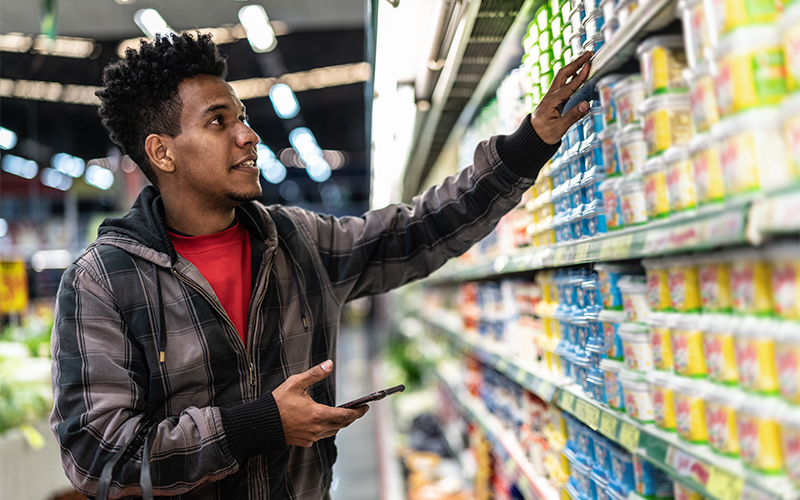Retail, CPG and Logistics
Key challenges in the CPG industry
The sales of consumer product goods (CPGs) witnessed a meteoric rise and sustained businesses during and after the pandemic. This was due to the changing priority of the customers as they significantly reduced expenditure on non-essential luxury items, entertainment, and travel. This resulted in more savings, which consumers chose to spend on CPGs through the e-commerce industry.
However, market conditions are different now. Mindless spending and supply chain disruption has brought global inflation. The United States saw inflation above 5% in 2021, which has grown to over 7% in 2022, impacting cpg companies significantly. In this blog, we discuss the challenges the CPG industry is staring at in 2022 and what businesses can do to cope with.
Challenges for the CPG industry
CPGs are fast-moving products that need businesses to proactively forecast their movements and make fast decisions. The changing buying habits, inflation, and global uncertainty are bringing new cpg supply chain challenges to the industry.
Global inflation
The economy was already running full steam thanks to overconsumption after COVID-19. However, the Russian invasion of Ukraine disrupted global supply chains for CPGs, leading to significant CPG industry - supply chain challenges and essential items such as petroleum and natural gas became expensive, which are the backbone of the industry. The rise in the cost of products has outpaced the increase in wages for an average worker. Buyers are pulling back from making high-ticket purchases such as cars and homes.
- Low end-to-end visibility: The needs of today’s buyers in the consumer goods industry are changing rapidly, and most businesses find it difficult to handle and meet their demands. Companies need constant market research and analysis to get end-to-end visibility of their supply chains and consumer demand. This is where real-time visibility of the supply chain helps a business in understanding the market pulse and tweak the operations accordingly. It also helps a business in improving packaging, shipping, payment, and warehouse management processes within the cpg brands.
- Difficult to maintain the inventory: Forecasting customer demand in the consumer goods industry is a huge challenge. Demand can depend on various factors, including economic conditions, festivals, and local or regional events. A system that forecasts the demand for consumer goods will simplify inventory planning and optimisation. It helps businesses collaborate with clients and vendors in a better way to optimise the cost and quality of the products.
- The need for sustainability: The UN Sustainable Development Goals (SDGs) and COP26 have set a net-zero emissions goal with a deadline of 2050. Businesses must actively reduce waste, develop high-quality products, and digitise supply chains. CPG businesses need to prepare for a circular economy and implement sustainable processes to meet evolving consumer preferences. Even customers make purchase decisions based on how sustainable the products and services are.
- The threat of supply chain disruption: Despite strong planning and forecasting, there are internal and external events that can disrupt the supply chains. These include economic instability, weather changes, natural calamities, forecasting errors, and wars affecting the goods industry. This causes the bullwhip effect, where a change in demand and supply creates a larger supply chain fluctuation. External factors include labour strikes, port closures, and shipping delays due to blocked sea routes. A recent example was the panic buying of products during the pandemic lockdown.
- Omnichannel marketing: The buyer journey is becoming increasingly complex for CPGs. Customers buy not only from store shelves but online as well. The purchasing decision could emerge from a social media feed, Google ads, websites, affiliate links, and online marketplaces such as Amazon. CPG industry marketers need to focus on all the channels, not just one, and be ready to serve the customers wherever they are.
In addition to the aforementioned challenges, changing customer habits will be a major challenge for the CPGs. Market data has revealed that 74% of buyers are enrolled in one CPG loyalty program, with the highest in the F&B sector. About 72% of buyers reported that participation in the loyalty program had increased their purchases.
For organisations on the digital transformation journey, agility is key in responding to a rapidly changing technology and business landscape. Now more than ever, it is crucial to deliver and exceed organisational expectations with a robust digital mindset backed by innovation. Enabling businesses to sense, learn, respond, and evolve like living organisms will be imperative for business excellence. A comprehensive yet modular suite of services is doing precisely that. Equipping organisations with intuitive decision-making automatically at scale, actionable insights based on real-time solutions, anytime/anywhere experience, and in-depth data visibility across functions leading to hyper-productivity, Live Enterprise is building connected organisations that are innovating collaboratively for the future.
How can Infosys BPM help in overcoming CPG supply chain challenges?
Our end-to-end BPM services for the retail, CPG industry, and logistics industries provide you with the right solution from planning to execution. Read the full range of services in the retail, CPG, and logistics sectors.







